Spring aop失效的幾種解決方案
先看下這個問題的背景:假設有一個spring應用,開發人員希望自定義一個注解@Log,可以加到指定的方法上,實現自動記錄日志(入參、出參、響應耗時這些)
package com.cnblogs.yjmyzz.springbootdemo.aspect; import java.lang.annotation.ElementType;import java.lang.annotation.Retention;import java.lang.annotation.RetentionPolicy;import java.lang.annotation.Target; @Retention(RetentionPolicy.RUNTIME)@Target(ElementType.METHOD)public @interface Log { }
然后再寫一個Aspect來解析這個注解,對打了Log注解的方法進行增強處理
package com.cnblogs.yjmyzz.springbootdemo.aspect; import org.aspectj.lang.JoinPoint;import org.aspectj.lang.ProceedingJoinPoint;import org.aspectj.lang.annotation.Around;import org.aspectj.lang.annotation.Aspect;import org.aspectj.lang.annotation.Pointcut;import org.springframework.stereotype.Component; import java.lang.reflect.Method; @Component@Aspectpublic class LogAspect { @Pointcut('execution (* com.cnblogs.yjmyzz.springbootdemo.service..*.*(..))') public void logPointcut() { } @Around('logPointcut()') public void around(JoinPoint point) { String methodName = point.getSignature().getName(); Object[] args = point.getArgs(); Class<?>[] argTypes = new Class[point.getArgs().length]; for (int i = 0; i < args.length; i++) { argTypes[i] = args[i].getClass(); } Method method = null; try { method = point.getTarget().getClass().getMethod(methodName, argTypes); } catch (Exception e) { e.printStackTrace(); } //獲取方法上的注解 Log log = method.getAnnotation(Log.class); if (log != null) { //演示方法執行前,記錄一行日志 System.out.println('before:' + methodName); } try { //執行方法 ((ProceedingJoinPoint) point).proceed(); } catch (Throwable throwable) { throwable.printStackTrace(); } finally { if (log != null) {//演示方法執行后,記錄一行日志System.out.println('after:' + methodName); } } }}
寫一個測試Service類:
package com.cnblogs.yjmyzz.springbootdemo.service; import com.cnblogs.yjmyzz.springbootdemo.aspect.Log;import org.springframework.stereotype.Component; @Componentpublic class HelloService { @Log public void sayHi(String msg) { System.out.println('tsayHi:' + msg); } public void anotherSayHi(String msg) { this.sayHi(msg); } }
最后來跑一把:
package com.cnblogs.yjmyzz.springbootdemo; import com.cnblogs.yjmyzz.springbootdemo.service.HelloService;import org.springframework.context.annotation.AnnotationConfigApplicationContext;import org.springframework.context.annotation.ComponentScan;import org.springframework.context.annotation.Configuration;import org.springframework.context.annotation.EnableAspectJAutoProxy; /** * @author 菩提樹下的楊過 */@ComponentScan('com.cnblogs.yjmyzz')@Configuration@EnableAspectJAutoProxypublic class SampleApplication { public static void main(String[] args) { AnnotationConfigApplicationContext context = new AnnotationConfigApplicationContext(SampleApplication.class); HelloService helloService = context.getBean(HelloService.class); helloService.sayHi('hi-1'); System.out.println('n'); helloService.anotherSayHi('hi-2'); }}
輸出如下:
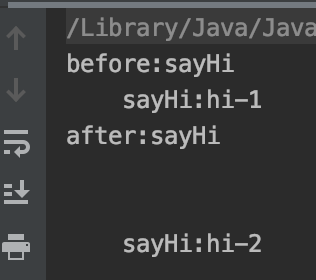
顯然HelloService中的anotherSayHi方法,并未被aop增強。 原因其實很簡單,了解AOP原理的同學想必都知道,AOP的實現有二類,如果是基于接口的,會采用動態代理,生成一個代理類,如果是基于類的,會采用CGLib生成子類,然后在子類中擴展父類中的方法。
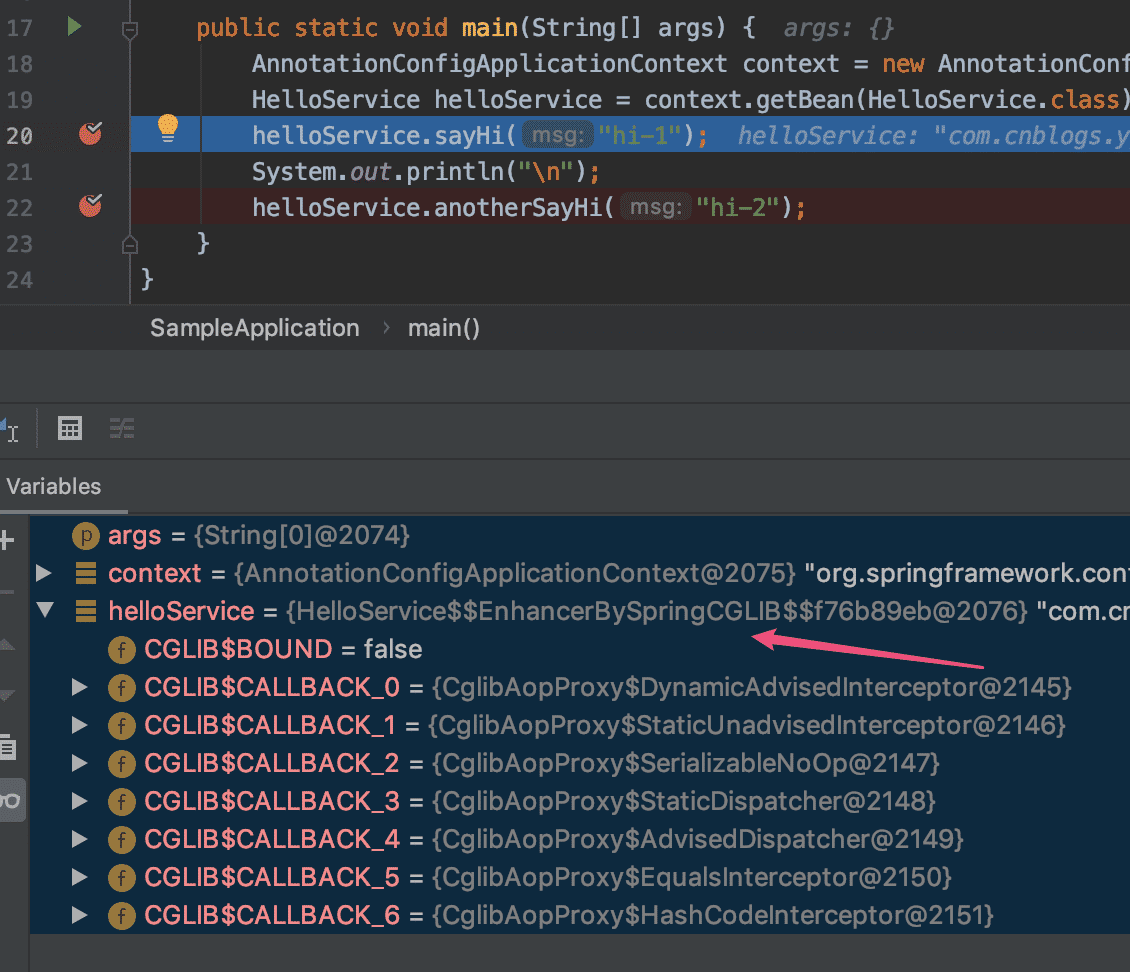
本文中HelloService并不是一個接口,所以從上圖的斷點中可以看出,當Spring運行時,HelloService被增加為...EnhancerBySpringCGLib...。但是當調用到anotherSayHi時
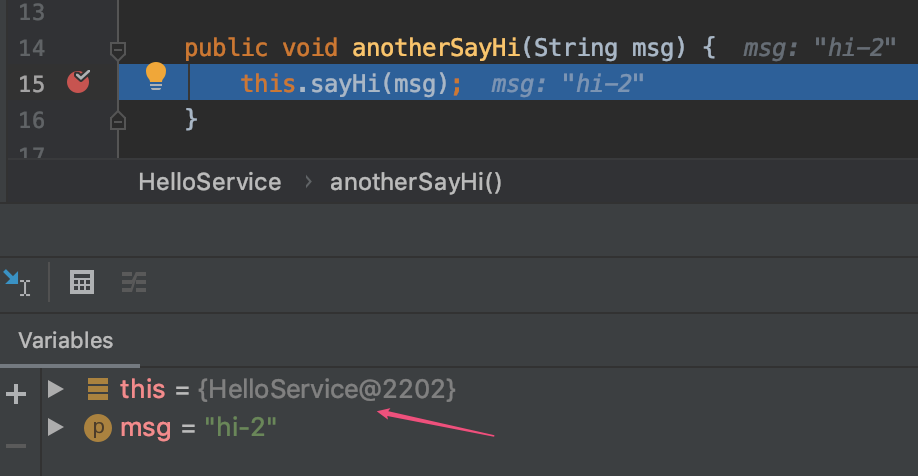
方法的調用方,其實是原始的HelloSerfvice實例,即:是未經過Spring AOP增強的對象實例。所以解決問題的思路就有了,想辦法用增強后的HelloService實例來調用!
方法一:用Autowired 注入自身的實例
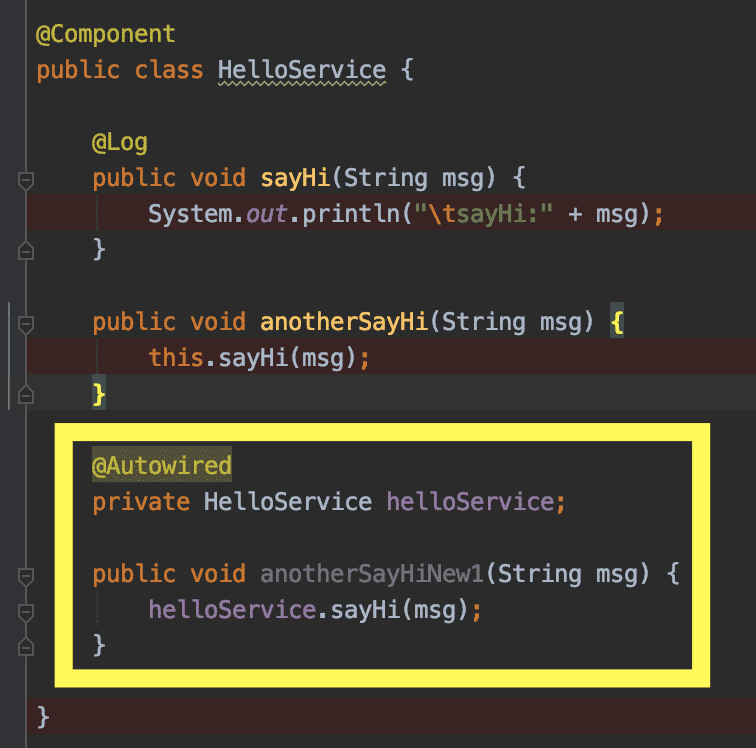
這個方法,第一眼看上去感覺有些怪,自己注入自己,感覺有點象遞歸/死循環的搞法,但確實可以work,Spring在解決循環依賴上有自己的處理方式,避免了死循環。
方法二:從Spring上下文獲取增強后的實例引用
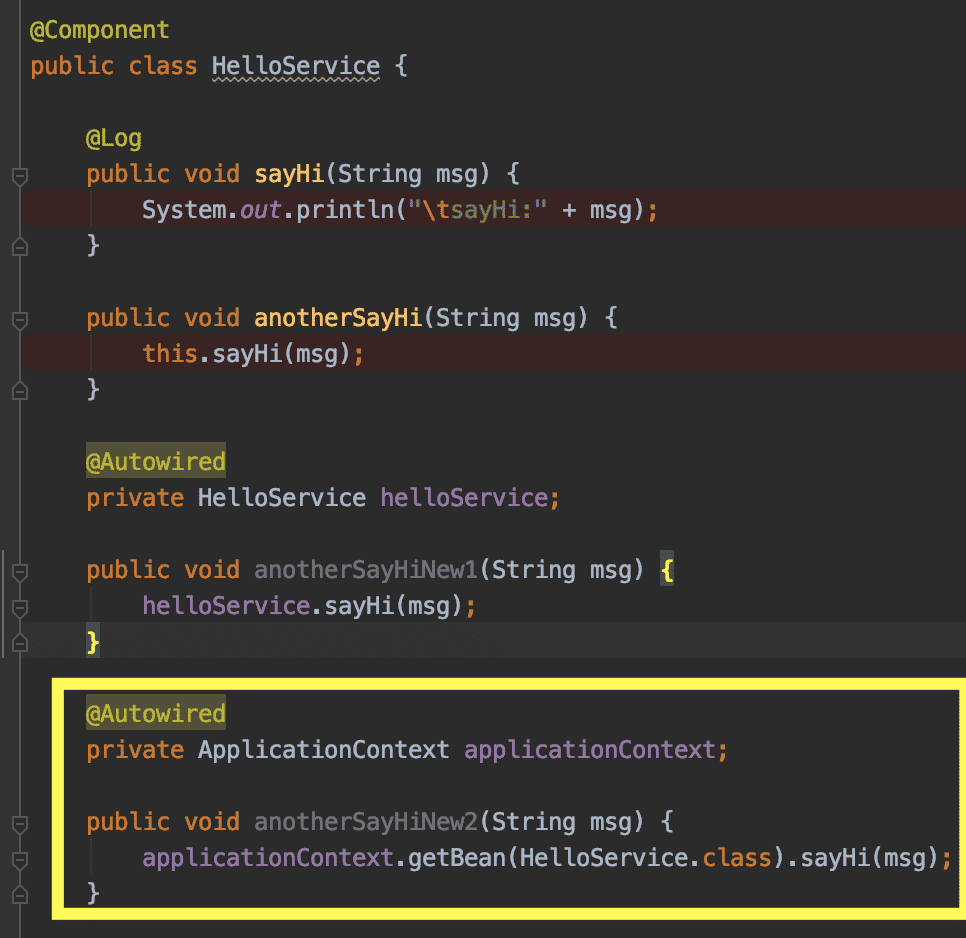
原理與方法一其實類似,不多解釋。
方法三: 利用AopContext
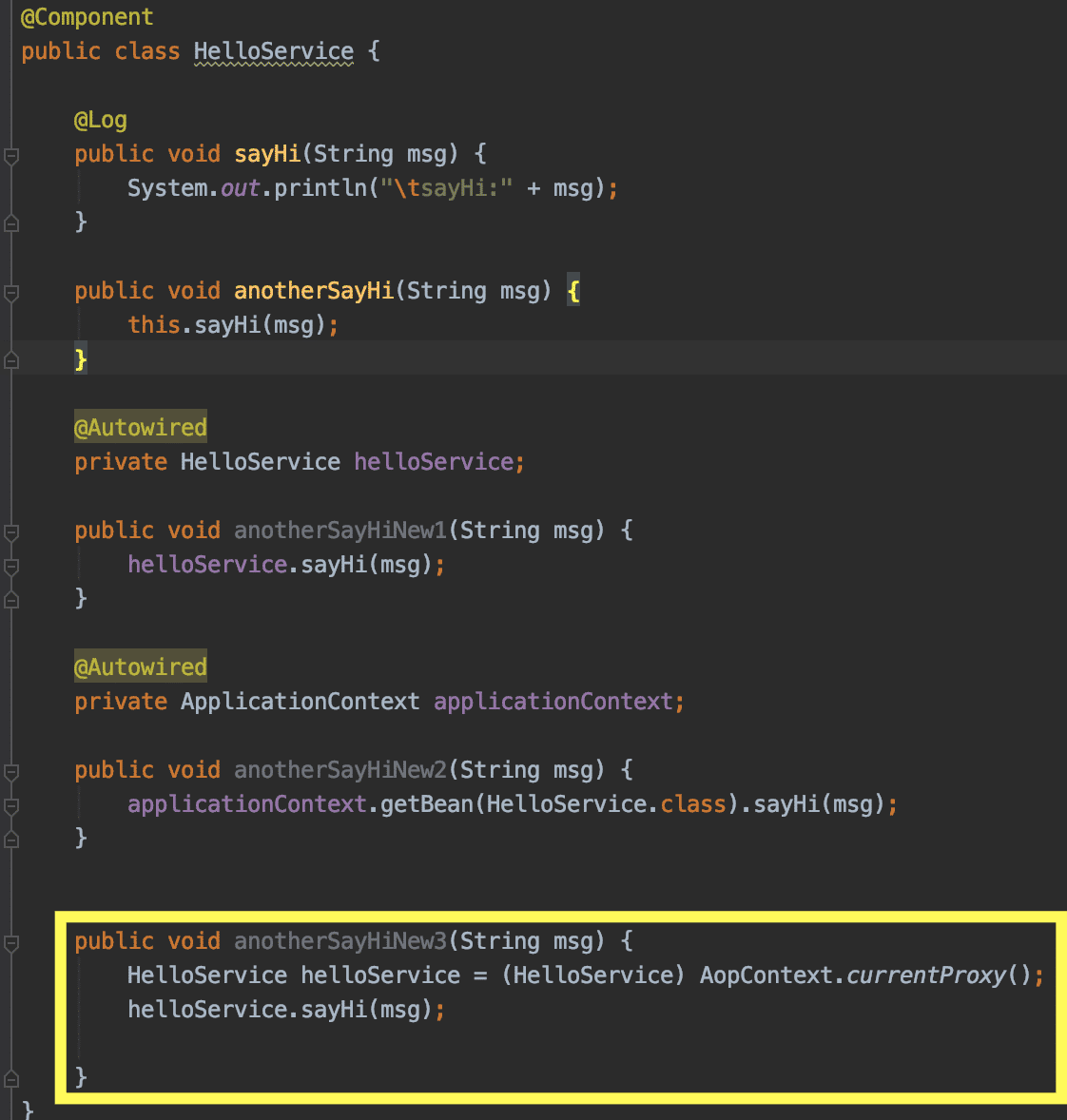
不過這個方法要注意的是,主類入口上,必須加上exporseProxy=true,參考下圖:
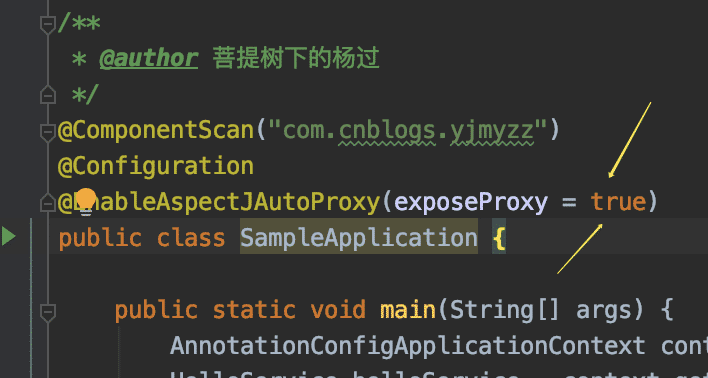
最后來驗證下這3種方法是否生效:
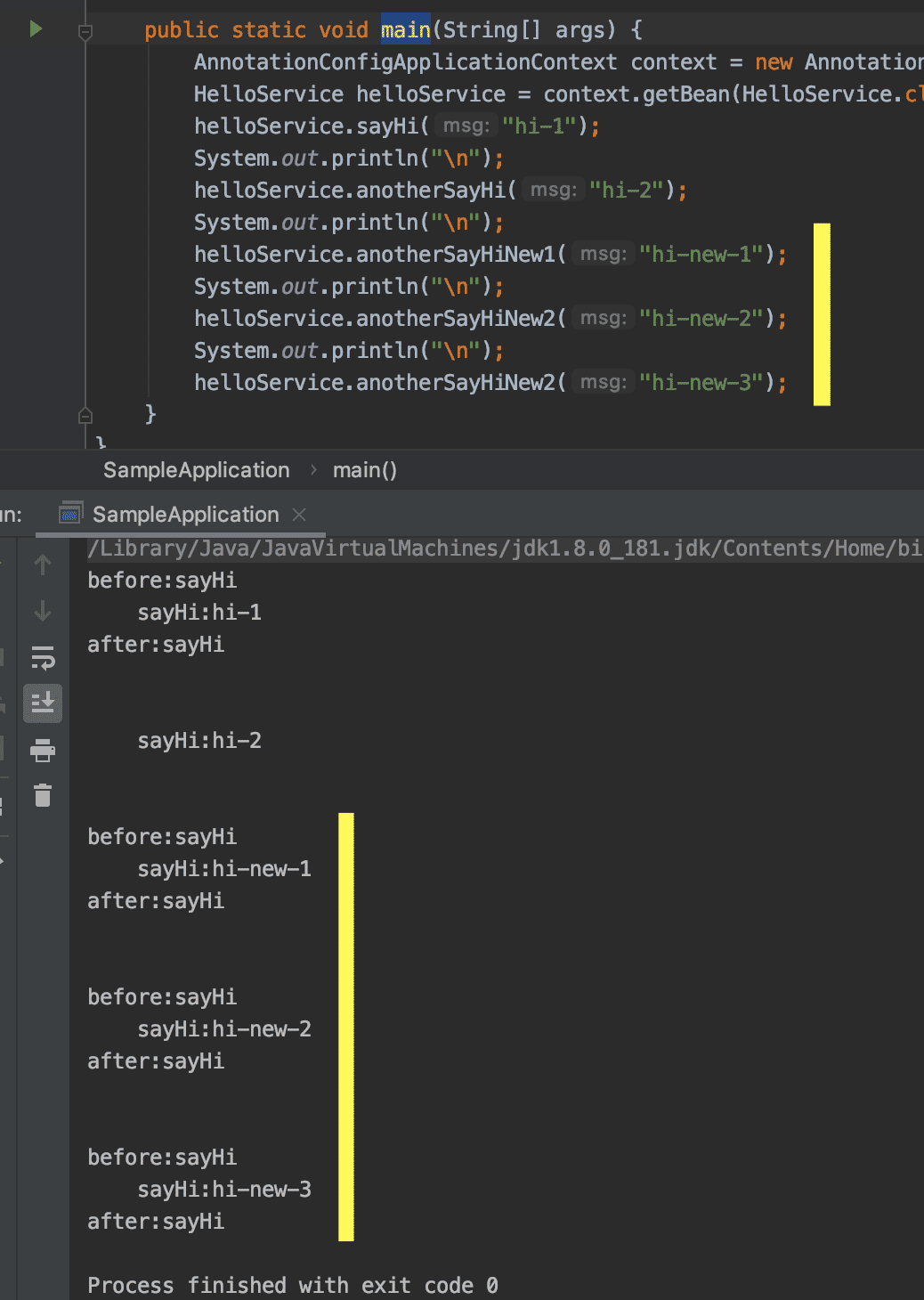
從運行結果上看,3種方法都可以解決這個問題。
以上就是本文的全部內容,希望對大家的學習有所幫助,也希望大家多多支持好吧啦網。
相關文章:

 網公網安備
網公網安備